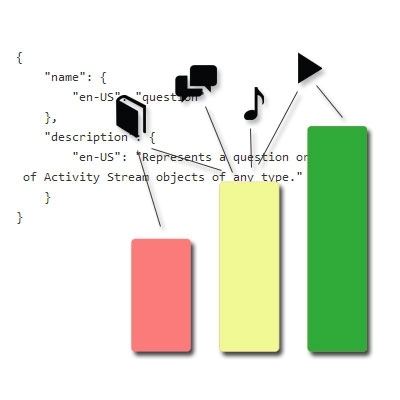The major shift microlearning brings to the eLearning world is the question of delivering learning activities to learners. I’ve put some thoughts concerning this question in my previous article (What Content Curation, Chunking Information and Micro-learning have in common?) but in short, the shift is represented by replacing long self-paced online courses with bite-sized learning episodes which often include use of short videos, flashcards, quizzes, branching scenarios, simulations, learning maps, etc. These episodes last no more than 10 minutes and therefore learners are more willing to complete and re-use them in the time of need.
The transition from online courses to microlearning episodes reflects also in learning analytics. Online course analytics data collected by the LMS provide an insight into learner’s progress, which shows whether the learner completed the course, or not. Especially in compliance training the sign of a completed course signals that the learner has obtained a required knowledge, which in many cases is an over-simplified conclusion.
On the other side, because of its short-term and reoccurring learning experience microlearning doesn’t have any intention to collect learning analytics data in order to present learner’s progress or the completion status. In other words, if the verb “complete” is the center of the online course analytics, then the verb “experience” is the center of the microlearning analytics.
TIN CAN API – The Gateway for Microlearning Analytics
As you may already know, the new standard for learning technology that makes it possible to collect data about the wide range of learner’s experiences (online and offline) is called Tin Can API (also known as the Experience API or xAPI). The premise representing the basics of the Tin Can API is that learning is happening everywhere. This idea is quite aligned with the microlearning, because microlearning episodes can also happen everywhere, they can be sporadic and above all driven by the learner. This could also be defined as a modern learning, which is, as Glahn described:
- Distributed,
- Collaborative,
- Continuous,
- Networked,
- Mobile, and
- Using multiple devices.
Tin Can API is well aware of these characteristics and therefore implemented a basic rule of how learning activities should be tracked. It uses statements in a form of nouns, verbs and objects. To be more specific, here are some examples of microlearning activities tracked by Tin Can API statements:
- Ted experienced this webpage.
- Ted watched this Youtube video.
- Ted experienced this SlideShare presentation.
- Ted answered question 10.
- Ted experienced this Learning map.
Why to track?
Based on examples above you can assume that at the end of the day, there will be tons of data stored somewhere which would be useless without organizing them in meaningful reports. Aberdour is right when asking: “why we need to track all this data and what use does it serve? There’s a possibility we are obsessing over the ability to track everything we learn, when what is more important is determining our learning NEEDS.” If the reason for collecting data is the collecting itself, then we completely missed the point of Tin Can API and learning analytics in general. Therefore, as Aberdour is implicitly suggesting, learning analytics is a road for measuring learning goals which are set by the learner or by his educator.
Thus, if the goal is set, then all learning analytics data visually presented in a report can reveal the learner’s learning story. These stories can help educators to recognize the learning patterns which are not isolated in a controlled environment like in the case of traditional LMS. These patterns are a result of a self-directed learning process driven by the discovery and acquisition of several microlearning episodes. Of course Tin Can API is a technical standard, even though implicitly evangelize new trends in online learning. If you are a non-technical type of person then the best option for now would be to get familiar with the basics of the Tin Can API (see the Learning map below) and leave developers to do their job. Our experience with Tin Can API while integrating it into the Edynco Learning map tool was great and I can only confirm Kelly’s words on Tin Can API - “it's not a question of if it will someday be a factor; it's a question of when.”
References:
- Christian Glahn, TinCan and The Confusion About the Next Generation of SCORM
- Mark Aberdour, Understanding Tin Can API
- David Kelly, Kevin Thorn, Should Instructional Designers care about the Tin Can API?
- What is the Tin Can API?
- Tin Can API in practice part 1
- Self-Reporting of Learning, Metacognition and Learning Power
- Gary Wise - Is Tin Can API Lipstick on the SCORM Pig?









